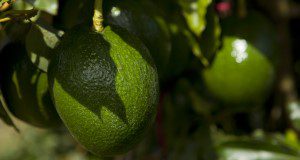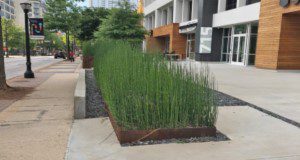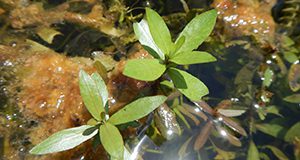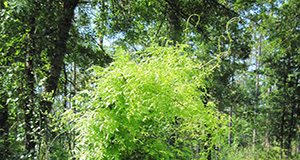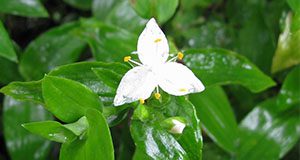This is the Spanish translation of HS1358, Recommendations for the Detection and Mitigation of Laurel Wilt Disease in Avocado and Related Tree Species in the Home Landscape. Avocado trees are a popular choice for homeowners in Florida, with over 600,000 growing in Florida home landscapes. However, avocado trees as well as others in the Lauraceae family are susceptible to laurel wilt disease, which can kill a tree in as few as three weeks. This new 8-page publication of the UF/IFAS Horticultural Sciences Department provides home owners recommendations for identifying and mitigating laurel wilt disease in the home landscape. Written by Jonathan H. Crane, Jeff Wasielewski, Daniel Carrillo, Romina Gazis, Bruce Schaffer, Fredy Ballen, and Edwards Evans.
https://edis.ifas.ufl.edu/hs1384
Tag: Invasive Species
Considerations for Selection and Use of Ornamental Grasses
Ornamental grasses create interest and excitement in the landscape with their unique characteristics. The availability of a large number of species and cultivars makes these plants very versatile, with many potential uses in the landscape. This publication outlines many of the considerations for the proper selection and use of ornamental grasses. The information and tables should assist the first-time gardener as well as the experienced landscaper in the selection and use of ornamental grasses in Florida. This 9-page major revision was written by Mack Thetford and Mary Salinas and published by the UF/IFAS Environmental Horticulture Department.
https://edis.ifas.ufl.edu/ep233
East Indian Hygrophila: Hygrophila polysperma (Roxb.) T. Anderson
East Indian hygrophila is a submersed aquatic weed that has invaded a number of aquatic systems in the southeastern United States. It is a federally listed noxious weed and a Florida Class II prohibited plant. Established populations of East Indian hygrophila interfere with human uses of bodies of water and disrupt ecosystems by forming dense, impenetrable monocultures that clog the water column, restrict water flow, and create poor habitat for aquatic fauna. This 5-page fact sheet provides an overview of the plant and discusses its habitat and control. Written by Lyn A. Gettys and Stephen F. Enloe, and published by the UF Agronomy Department, December 2016.
http://edis.ifas.ufl.edu/ag413
Control y Biologia del Helecho Trepador Japones (Lygodium japonicum )
El helecho trepador japonés es una enredadera invasiva no nativa de los Estados Unidos (EEUU) que fue introducida aproximadamente en 1900. Este helecho se ha establecido a lo largo de la llanura costera del sudeste de los EEUU desde los estados de Norte y Sur Carolinas hasta Texas y Arkansas. El helecho trepador japonés es nativo de Asia, en particular Japón así como al oeste de la cordillera de los Himalayas. El área de establecimiento se ha expandido desde la región de la costa del Golfo de México incluyendo TX, AR, LA, MS, AL, FL, GA, SC, NC, y PA. En Florida, el helecho trepador japonés está ampliamente distribuido en el norte y al oeste del estado, mientras que en la parte centro-sur su abundancia es variable. Este helecho está adaptado a lugares soleados o con sombra, y por lo general se localiza en suelos húmedos como los bordes de los pantanos, lagos, arroyos y bosques de tierras altas.
This 6-page fact sheet was written by Elsa D. Chevasco, Patrick J. Minogue, Kimberly K. Bohn, and Francisco Escobedo, and published by the UF Department of School of Forest Resources and Conservation, November 2016.
http://edis.ifas.ufl.edu/fr344
Identification, Biology, and Control of Small-Leaf Spiderwort (Tradescantia fluminensis): An Invasive Weed of Virtually Worldwide Distribution
Tradescantia fluminensis (small-leaf spiderwort) is a perennial subsucculent herb native to tropical and subtropical regions of Brazil and Argentina. The species has been introduced to the United States and countries in many parts of the world where it is often considered invasive. This seven-page fact sheet describes the small-leaf spiderwort, its taxonomy, geographical distribution, biology and ecology, reproduction and colonization, its impact as a weed in the southeastern United States, and ways of managing the spread of small-leaf spiderwort. Written by Jason C. Setiz and Mark W. Clark and published by the Department of Soil and Water Science.
http://edis.ifas.ufl.edu/ss652
Hydrilla: Florida's Worst Submersed Weed
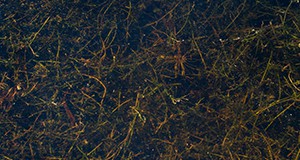
Hydrilla, which was originally introduced to the state as an aquarium plant, was intentionally planted in canals by aquarium plant dealers in the 1950s and quickly escaped cultivation. In addition to being one of the world’s worst aquatic weeds, the species is Florida’s most intensively managed submersed plant. Hydrilla is a federally listed noxious weed and a prohibited aquatic plant in Florida, making cultivation, sale, and possession of the species illegal. This 7-page fact sheet discusses the classification, characteristics, habitat, and management of hydrilla. Written by Lyn A. Gettys and Stephen F. Enloe, and published by the UF Agronomy Department, February 2016.
http://edis.ifas.ufl.edu/ag404
SSAGR86/AG100 The Story Behind the IFAS Assessment of Non-native Plants in Florida’s Natural Areas
Revised! SS-AGR-86, an 8-page fact sheet by A. M. Fox, D. R. Gordon, J. A. Dusky, L. Tyson, R. K. Stocker, K.A. Langeland, and A.L. Cooper, provides a history, justification, and summary of the IFAS Assessment of Non-Native Plants in Florida’s Natural Areas. Includes references. Published by the UF Department of Agronomy, November 2009.
http://edis.ifas.ufl.edu/AG100
FOR223/FR285 Got Invasives? Get Help!
FOR-223, a 2-page fact sheet by Benjamin Koubek and Chris Demers, describes the FloridaInvasives.org Web site and how can help landowners and land managers locate valuable technical and financial assistance prorgams to prevent or control invasive exotice species problems. Published by the UF School of Forest Resources and Conservation, June 2009.
http://edis.ifas.ufl.edu/FR285
SSAGR17SP/AG328 Control de Brazilian Pepper-tree
SS-AGR-17-Sp, a 5-page illustrated fact sheet by Ken Gioeli and Ken Langeland, is the Spanish language version of SS-AGR-17/AA219 Brazilian Pepper Tree Control. It describes this shrub or small tree which is one of the most agressive non-native invaders of mangrove communities, and affecting nearly all terrestrial ecosystems in central and southern Florida — its history, habitat, identification, and control. Published by the UF Department of Agronomy, March 2009.
http://edis.ifas.ufl.edu/AG328
